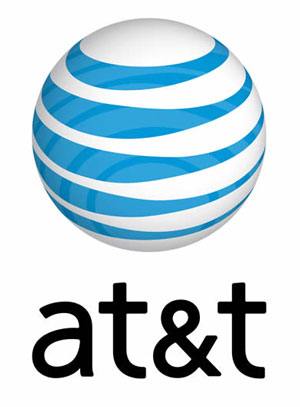AT&T Plans To Trial 400GbE Data Speeds In 2017
Update, 11/1/16, 7:33am PT: AT&T reached out to clarify that although businesses will be the initial beneficiaries of the new network capabilities, businesses will not be part of the early 2017 trial. Instead, the technology itself will be getting a trial. There is currently no timetable for when businesses themselves will get a shot at 400GbE. We have amended the headline and some copy accordingly.
AT&T business customers rejoice: The company announced plans to test 400Gbps Ethernet data connections on a trial basis in 2017.
For reference, AT&T claimed that these speeds will allow people to "download approximately 10 two-hour movies in less than a second" or "watch 100,000 streaming movies at the same time." The company said it would become the first ISP in the United States to use 400GbE connections on its network if its plans to trial the tech next year remain on track. Now, the question is how long it might take for the average person to benefit from these updates.
This change is meant to help AT&T keep pace with the growing demand for reliable high-speed internet access. The company said that data traffic on its network rose 150,000% between 2007 and 2015, which means AT&T will have to regularly improve its network to keep its business customers happy. Even ISPs have to buckle to demand, despite their control over much of the United States' internet access, and that's exactly what AT&T is doing here.
Here's how the company outlined its plan to offer these ultra-fast connections some time next year:
Phase 1: Will use optical gear from Coriant to carry a true 400GbE service across a long-distance span of AT&T global backbone from New York to Washington, demonstrating that AT&T's nationwide software-centric network is 400G-ready. Phase 2: Will trial a 400GbE on a single 400G wavelength across AT&T's OpenROADM metro network. We'll use optical gear from Ciena, a developer of next-generation coherent optical solutions, to show the network is ready to transport 400GbE to serve our customers in a metro area. Phase 3: Will test the first instance of a 400GbE open router platform. The "disaggregated router" platform uses merchant silicon and open source software – another industry first.
These upgrades are meant to help AT&T's business customers. The company's plan for consumers is less clear: It said that enabling these 400GbE connections "moves toward delivering next-generation network speeds and agility customers need" and "aligns with the shift toward a software-centric network" but doesn't offer a timeline for when these improvements might result in faster internet connections for its many individual customers.
Get Tom's Hardware's best news and in-depth reviews, straight to your inbox.
Instead, the plan most likely to affect individuals is AT&T's proposed $85 billion acquisition of Time Warner. That deal threatens to undermine the quality of Time Warner's media companies--HBO, The CW Network, and others--while also giving AT&T motivation to monitor its customers' internet traffic so it can offer more information to advertisers. Business customers get super fast downloads; individuals get to worry about their ISP spying on them.
Still, improvements to the network are likely to eventually trickle down to consumers. We just have to see how long that process will take, and given AT&T's infamous resistance to offering individuals better service without restrictions, what compromises will have to be made once it's finished. AT&T business customers ought to be excited about this news, but the rest of us should keep a wary eye on what these changes will mean for everyone else.

Nathaniel Mott is a freelance news and features writer for Tom's Hardware US, covering breaking news, security, and the silliest aspects of the tech industry.
-
gamebrigada In the Title, 400GB is not 400Gb. B = Byte, b = bit. 400GB ethernet = 3200Gb. Its confusing.Reply -
James5mith Also, 400GB is an amount of data. You need a time element to denote speed. Like 400Gbps, or 400Gb/s.Reply
In technology notation matters. -
dgingeri Either someone is joking or misunderstanding what they're talking about. There is no way they can put out 400Gb ethernet speeds to end users. No. Possible. Way. They couldn't even do this for most business customers.Reply
They might be putting that to their local offices, which would give users much more usable bandwidth, where 4000 customers could maintain their 100Mb connections at full speed. That seems more like what they would be doing. -
jacklongley Reply18793566 said:Is this backbone or end to end connections?
To start with, the upgrades would occur to the backbone. They stated as much in the 3 phase summary.
I expect that business connections won't have availability at 400Gbps until after 2017. Any availability would be sparse at best, in specific markets likely to have the demand. So probably the biggest carrier hotels first. -
ThisIsMe Sheesh... I guess Nathaniel Mott isn't going to let that AT&T/Time Warner Inc. deal go. lolReply -
Blytz @Dgingeri you might want to look around, 100 gigabit is already available and 400 gigabit is in dev.Reply
Have a google of terabit ethernet and read around.
Unlikely it'll see copper, but it fibre, certainly -
Kewlx25 An actual 400Gb connection would be quite impressive. 400Gb has been limited to trunk or peering links.Reply -
somebodyspecial The time warner deal should definitely be killed. No way we want that much power in one place. I'd say the same if Apple, Disney etc attempts to buy netflix (rumors of both those floating around). It's bad enough they all own huge stakes in hulu.Reply
